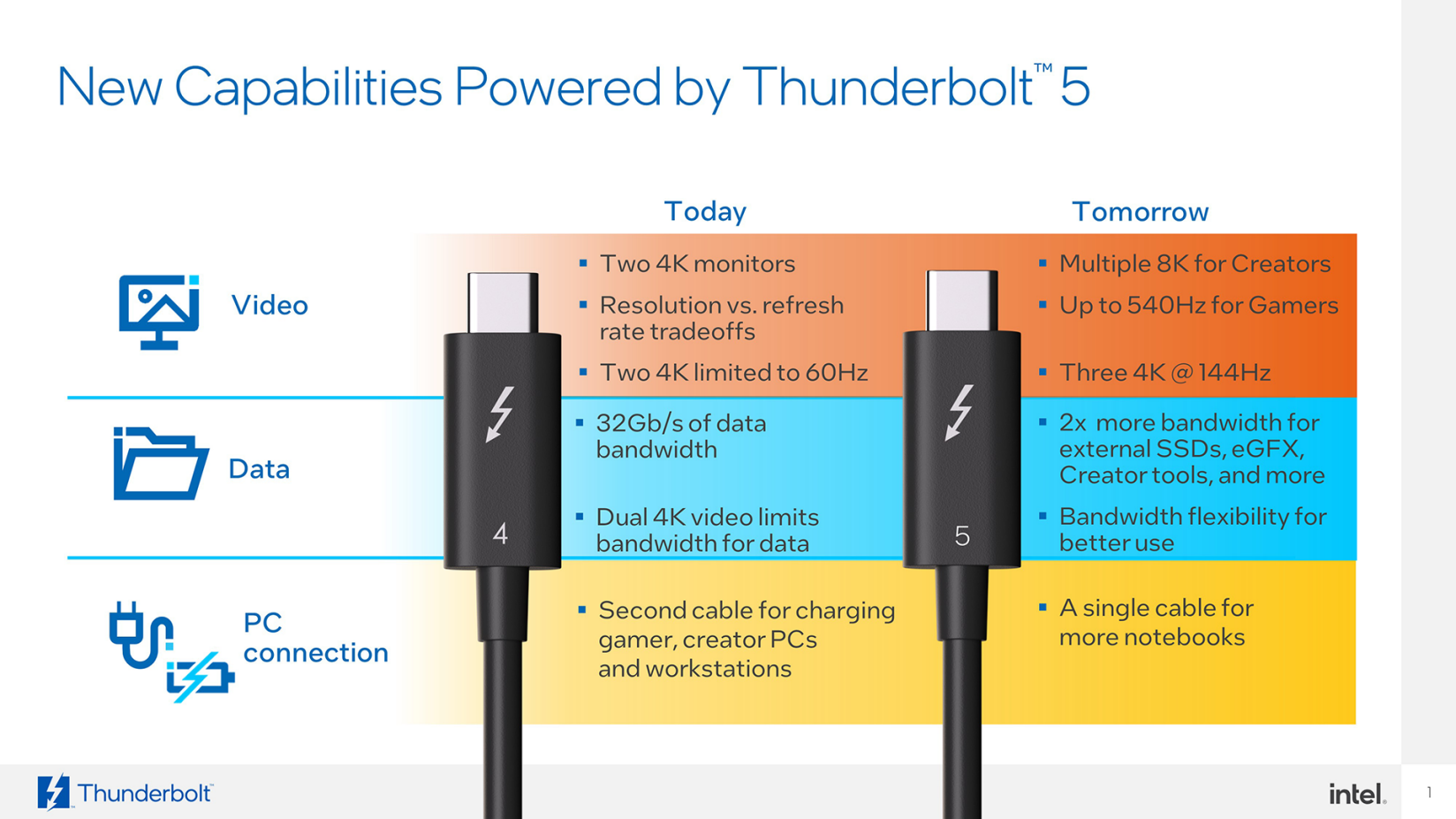Thunderbolt, initially created through a partnership between Intel and Apple, made its inaugural appearance in 2011. Its main objective is to provide swift data transfer speeds and accommodate various data and display connections via a single port. Over time, Thunderbolt has undergone multiple advancements, enhancing both its performance and features.
The latest development, Thunderbolt 4, brought about improved display capabilities, enabling dual 4K monitor support or a single 8K monitor. Furthermore, Thunderbolt 4 required adherence to USB4 specifications, delivered up to 100W of charging power, and ensured a minimum data transfer rate of 32 Gbps. Nevertheless, it’s important to note that despite these enhancements, both Thunderbolt 3 and Thunderbolt 4 continue to offer the same overall bandwidth of 40 Gbps and compatibility with the PCIe Gen3 standard.
The revised iteration set a new minimum requirement for PCIe data transfer at 32 Gbps, although Thunderbolt 3 also had the capability, though it wasn’t obligatory. As a result, gamers using external graphics wouldn’t typically notice any major difference between Thunderbolt 3.0 and 4.0 enclosures.
Last October, Intel unveiled their plans for a new generation of Thunderbolt technology. Today, they have officially introduced it as Thunderbolt 5. This standard offers a potential total bandwidth of up to 120 Gbps, thanks to the utilization of Bandwidth Boost technology. By default, Thunderbolt 5 provides an 80 Gbps bidirectional connection. However, when the demand arises for high-resolution displays with higher refresh rates or for supporting multiple displays, devices can harness the full 120 Gbps speed. In such scenarios, the receiving speed can be flexibly adjusted, ranging from 80 Gbps down to 40 Gbps.
One significant aspect of Thunderbolt 5 is its compatibility with DisplayPort 2.1, USB v4, USB 3 20G, and PCIe Gen4. This standard also enables charging support of up to 240W, eliminating the need for separate charging cables with certain laptops. The incorporation of PCIe Gen4 compatibility suggests that Thunderbolt 5 could unleash higher bandwidth capabilities for external GPUs, potentially addressing a key limitation of Thunderbolt 3 and 4 standards. However, to fully support this, systems must be equipped with PCIe-compatible connections operating at 64 Gbps speeds.
Anticipations suggest that forthcoming laptops, possibly those built on the Meteor Lake architecture, could be among the first systems to integrate Thunderbolt 5. The official launch of the initial systems equipped with this technology is scheduled for 2024.
Source & Images: Intel






